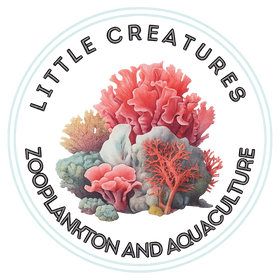Nature’s Microscopic Powerhouse That Feeds the Planet
When people think of ocean life, they often picture coral reefs, colourful fish, or sea turtles. But beneath all of that—floating freely in the sunlit layers of the ocean—is one of the most important lifeforms on Earth: phytoplankton.
These microscopic algae may be invisible to the naked eye, but their impact is massive. From supporting coral reef ecosystems to producing over half the world’s oxygen, phytoplankton are the unsung heroes of the sea—and the planet.
Where Does Phytoplankton Come From?
Phytoplankton are single-celled microalgae that live in both saltwater and freshwater environments. Unlike seaweed or kelp, they’re not rooted plants—they drift with the currents in what's called the photic zone, where sunlight penetrates the water.
In Australia, phytoplankton thrive in everything from the Great Barrier Reef to temperate estuaries and aquaculture ponds. While there are thousands of species, the most common include:
- Nannochloropsis
- Tetraselmis
- Isochrysis
- Phaeodactylum
How Does Phytoplankton Work?
Phytoplankton use sunlight, carbon dioxide (CO₂), and nutrients in the water to create energy through photosynthesis—just like land-based plants. But what makes them especially important is the byproduct they release during this process:
➡️ Oxygen.
It’s estimated that 50–80% of the Earth’s oxygen comes from phytoplankton, not trees. Every second breath you take? You can thank these tiny organisms for that.
They also absorb CO₂ from the atmosphere, playing a key role in regulating the planet’s climate.
Why Is Phytoplankton So Important?
Phytoplankton sit at the very bottom of the marine food chain, making them critical for aquatic ecosystems. Here’s what they support:
🌱 As Food
- Feed for copepods, rotifers, bivalves, shrimp, and other zooplankton
- Nutrition for corals, clams, feather dusters, and other filter feeders
- Used in aquaculture to raise healthy fish and crustacean larvae
🌍 For the Environment
- Produce the majority of Earth's breathable oxygen
- Absorb carbon dioxide, helping fight climate change
- Cycle nutrients in both natural and controlled ecosystems
Phytoplankton’s Role in Aquaculture & Reef Tanks
In marine aquariums, live phytoplankton has benefits far beyond just feeding coral:
- Enriches live zooplankton like copepods and rotifers for feeding fish and larvae
- Helps stabilise water chemistry by absorbing excess nutrients
- Supports microbial balance in tanks and raceways
- Increases biodiversity and resilience of your reef
Whether you're running a hobby nano reef or managing a commercial hatchery, phytoplankton is the natural foundation of any thriving marine system.
A Note from Little Creatures
At Little Creatures Zooplankton and Aquaculture, we culture and supply live phytoplankton strains right here in Australia. Sustainably grown, freshly shipped, and ready to dose—our phyto helps aquarists and breeders nourish their tanks naturally.
Want to grow your own phytoplankton culture? We’ll even help you get started—just check out our guide or message the team.
Quick Facts About Phytoplankton 🌊
| 💡 | Fact |
|---|---|
| 🔬 | Microscopic, single-celled algae |
| ☀️ | Use sunlight to perform photosynthesis |
| 🌬️ | Produce over 50% of Earth's oxygen |
| 🐟 | Feed the entire marine food web |
| 🌏 | Vital in climate regulation via CO₂ absorption |
| 🧪 | Used in aquariums, aquaculture, and science |
Explore Live Phytoplankton
➡️ View our live feed range
📦 Australia-wide shipping | 🌱 Sustainably packed | 🧫 Reef-safe & aquaculture-tested

